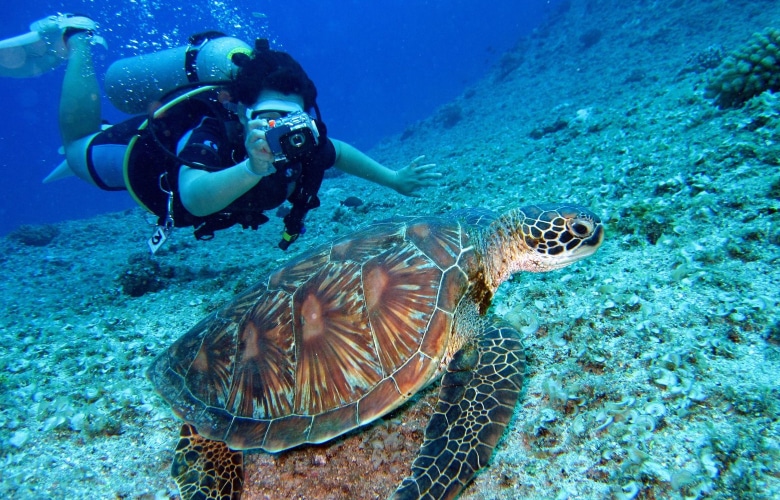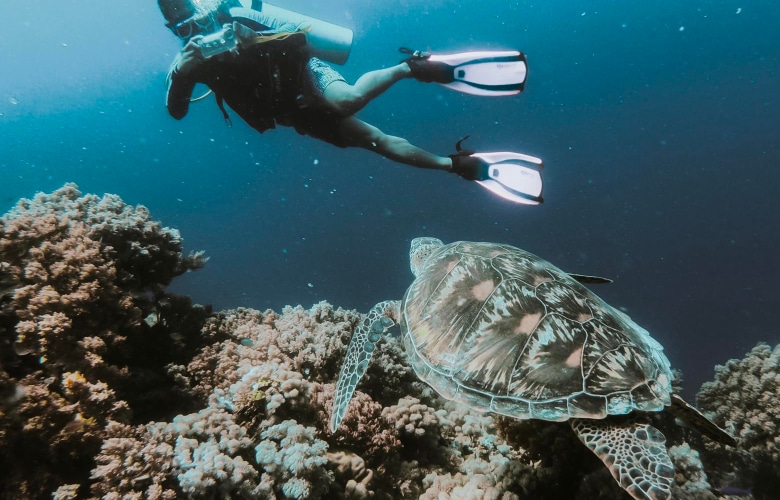Photo / Video News & Reviews
Aperture, Shutter Speed, and ISO for Underwater Photography
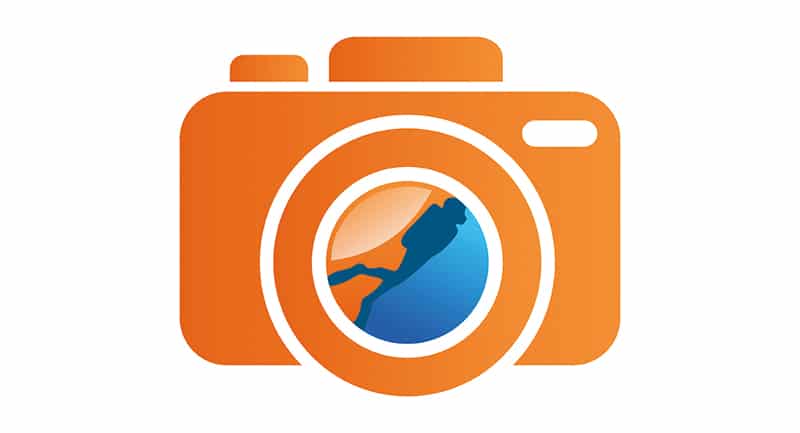
By Carlo Piscioneri, Founder of Night Sky Pix.
When just starting out in low-light photography, trying to get your head around all the camera settings can be quite overwhelming. The purpose of this article is to get you up to speed with some of the most common terms related to camera settings, what they mean, and how they affect your images!
So whether you’re trying to shoot a starry night image, or into the cool depths of underwater photography, these principles will all apply equally.
Getting Started With Underwater Photography
If you’re planning on shooting underwater, getting to know your camera is extremely important. First off, to capture the best photos possible, you’ll need to set your camera to (M) Manual Mode.
Auto mode is great for daytime images, but in low-light situations where the conditions can constantly change, you’ll need manual mode and adjust your settings for the specific situation.
By doing this, you are taking control of your camera’s settings. Regardless if you are shooting underwater or above ground, this will make the biggest difference to your images.
Throughout the rest of this article, we’ll discuss the three Manual settings that all photographers need to look at when taking photos. They are aperture, shutter speed, and ISO.
Exposure Triangle
The term “exposure triangle”, is the combination of the three main components of photography.
Aperture, shutter speed, and ISO. All three work together to help bring out the best in your images and will determine the overall brightness of your pics.
Once you begin to understand how the three all relate to each other, you’ll have much more control of your camera’s abilities and settings, allowing you to adjust to the right settings for the right situation.
Below is a breakdown of each of these terms and what they do.
Aperture
This is the first common term that you should learn in any form of photography.
Simply put, an aperture is the size of the opening in the lens.
Think of aperture as an adjustable widening and narrowing of the lens, the wider the opening, the more light will pass through and make its way to the sensor, while the smaller the lens opening the less light is allowed to pass through.
While there are many types of visual devices that use a reference of apertures, such as binoculars and telescopes, they lack something that digital cameras have, which is a diaphragm that allows you to adjust the amount of light that reaches the camera’s sensor.
Camera settings with the aperture wide open allow more light into the image, resulting in a brighter photo. This is of the utmost importance when shooting in low light situations like night and underwater photography.
The aperture is measured in f-stops, a small aperture like f/1.8 is a wide opening, a large aperture like f/22 is a very narrow one.
The aperture is one of three camera settings that determine the overall exposure and brightness of an image, (how bright or dark the final image is).
Depth Of Field
The aperture also affects how much of the image is in focus (DOF). Wide apertures result in a creamy, unfocused background, while narrow apertures keep more of the image in focus.
Choosing A Higher Or Lower Aperture Setting?
Depending on the final outcome you want to achieve from photographing a scene, here are a few things to consider.
When shooting an object close up, a wider aperture will make the scenery behind the subject out of focus/blurry. This is usually performed when shooting a subject close up, like a portrait photograph.
A smaller aperture setting will allow you to achieve a broader depth of field view so you can capture a broader area of focus. This is useful for landscape photography.
Shutter Speed
The shutter speed is the setting of the camera that opens and closes the shutter to let light in and take a picture. The shutter speed indicates how long the shutter remains open, written in seconds or fractions of a second, such as 1/200 s. or 1″, where the symbol ” is quite often used to denote a whole second.
If you reduce the time your camera’s eye is open by half (shutter speed), you then get half the ambient light in your image.
The longer the shutter remains open, the more light is let in. So why don’t we just leave the shutter speed setting as long as possible?
Because anything that moves when the shutter is open will be out of focus and blurred, and if the whole camera moves with the shutter open, the whole image will be blurred.
Does Shutter Speed Affect All The Brightness Of An Image?
Changing the shutter speed affects the ambient areas of your image. The faster the shutter speed, the darker these areas become.
What About A Flash Or Strobe?
The amount of light you get into the picture with a flash or strobe is not affected by the shutter speed, because a flash only flashes for a fraction of a second. Changing the shutter speed has no effect on how much stroboscopic light appears in your picture.
ISO
The ISO value determines how light-sensitive the camera is. For example, an ISO value of 100 means that the camera is not very sensitive – ideal for daylight shooting.
An ISO value of say, 3200 or more means that the camera will be very sensitive to light, so you can use this higher ISO value for low-light shooting. The downside to increasing your ISO value is that the higher the ISO value, the more noise you start to introduce into your images, resulting in a more “grainy artifacts” in the image.
While you still need to be careful when raising your ISO as to not introduce too much noise into your image, it’s not as much of an issue as it used to be.
Older models of DSLR cameras were notorious for introducing a lot of noise into a picture but nowadays, a lot of the newer model cameras, from Canon, Sony, Nikon, etc have much better camera sensors and can handle much higher ISO levels with minimal noise in an image.
Like all things, I recommend you test the threshold of your camera to see what you’re happy with when raising your ISO.
Lastly, when it comes to ISO, especially during any form of low-light photography, it is usually the last of the settings to change, as you really don’t want to introduce any more digital noise into your image than needed.
Conclusion
Low-light photography does take a little more effort than regular daylight photography. You’ll need to adjust a combination of the three components (exposure triangle), aperture, shutter speed and ISO to capture that perfect shot.
Hopefully this article has helped you get a bit more understanding of what those three do and why they’re so important.
To learn more about night photography, visit www.nightskypix.com
Carlo Piscioneri
Carlo is editor in chief at NightSkyPix.com. You’ll often find him in the backyard testing out different equipment or techniques to try and improve his images. He loves to write about all things night photography and can’t wait to share what he has learned with you.
NightSkyPix is a site dedicated to astrophotography. When it comes to night photography, there are many, many options when it comes to equipment, configuration, and even what to shoot. Things can get complicated quickly, so the aim is to help simplify and teach readers by sharing great guides, tutorials, reviews, and resources.
Blogs
Diver Discovering Whale Skeletons Beneath Ice Judged World’s Best Underwater Photograph
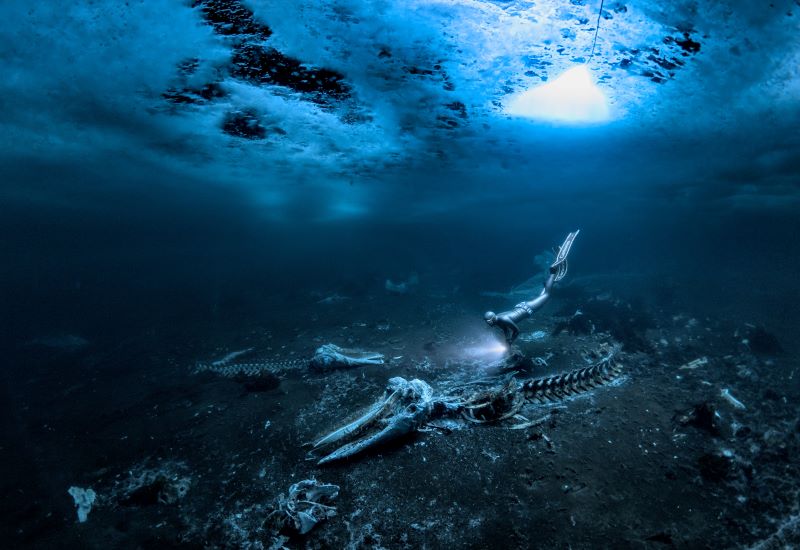
An emotive photograph showing a freediver examining the aftermath of whaling sees
Alex Dawson from Sweden named Underwater Photographer of the Year 2024. Dawson’s
photograph ‘Whale Bones’ triumphed over 6500 underwater pictures entered by underwater
photographers from around the world.
“Whale Bones was photographed in the toughest conditions,” explains chair of judging
panel Alex Mustard, “as a breath-hold diver descends below the Greenland ice sheet to bear
witness to the carcasses. The composition invites us to consider our impact on the great
creatures of this planet. Since the rise of humans, wild animals have declined by 85%. Today,
just 4% of mammals are wildlife, the remaining 96% are humans and our livestock. Our way
needs to change to find a balance with nature.”
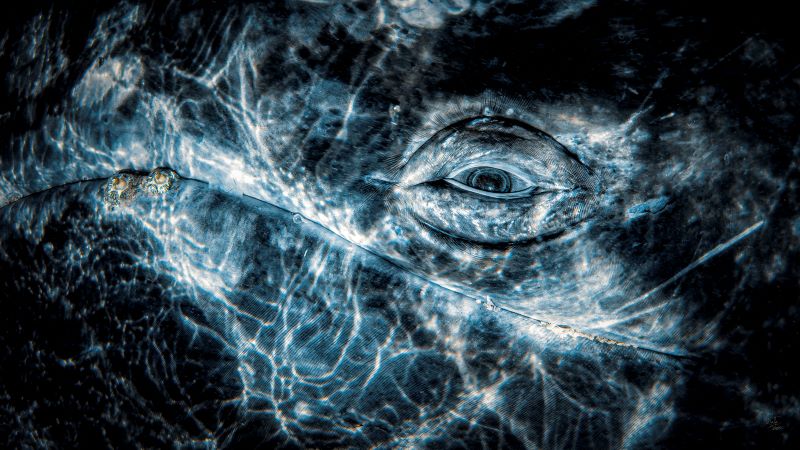
Photo: Rafael
Fernandez Caballero
Whales dominated the winning pictures this year with Spanish photographer Rafael
Fernandez Caballero winning two categories with his revealing photos of these ocean giants:
a close up of a grey whale’s eye and an action shot of a Bryde’s whale engulfing an entire bait
ball, both taken in Magdalena Bay, Baja California, Mexico. Fernandez Caballero took ‘Grey
Whale Connection’ while drifting in a small boat, holding his camera over the side in the water
to photograph the curious whale. ‘The End Of A Baitball’ required Fernandez Caballero to dive
down and be in exactly the right place at the moment the whale lunged. “The photo shows
the high speed attack,” he said, “with the whale engulfing hundreds of kilograms of sardines
in one bite — simply unforgettable to see predation on such a scale.”
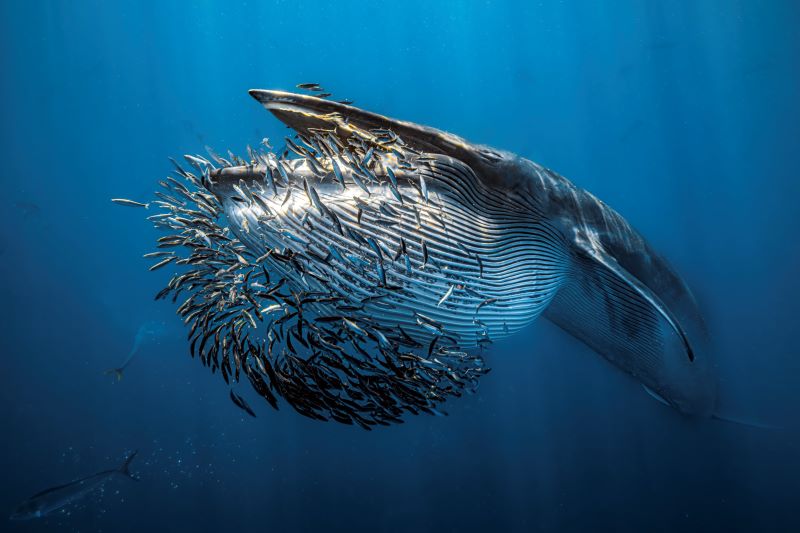
Photo: Rafael
Fernandez Caballero
Lisa Stengel from the United States was named Up & Coming Underwater Photographer of the Year 2024 for her image of a mahi-mahi catching a sardine, in Mexico. Stengel used both a very fast shutter speed and her hearing to catch the moment. “If you listen there’s an enormous amount of sound in the ocean,” she explained. “The action was too fast to see, so I honed in on the sound of the attacks with my camera to capture this special moment.”
“It is such an exciting time in underwater photography because photographers are capturing such amazing new images, by visiting new locations and using the latest cameras,”
commented judge Alex Mustard. “Until this year I’d hardly ever see a photo of a mahi mahi,
now Lisa has photographed one hunting, action that plays out in the blink of an eye.”
The Underwater Photographer of the Year contest is based in the UK, and Jenny Stock,
was named as British Underwater Photographer of the Year 2024 for her image “Star
Attraction”, which finds beauty in species of British wildlife that are often overlooked.
Exploring the west coast of Scotland, Stock explained “in the dark green depths my torch
picked out the vivid colours of a living carpet of thousands of brittle stars, each with a
different pattern. I was happily snapping away, when I spotted this purple sea urchin and I
got really excited.”
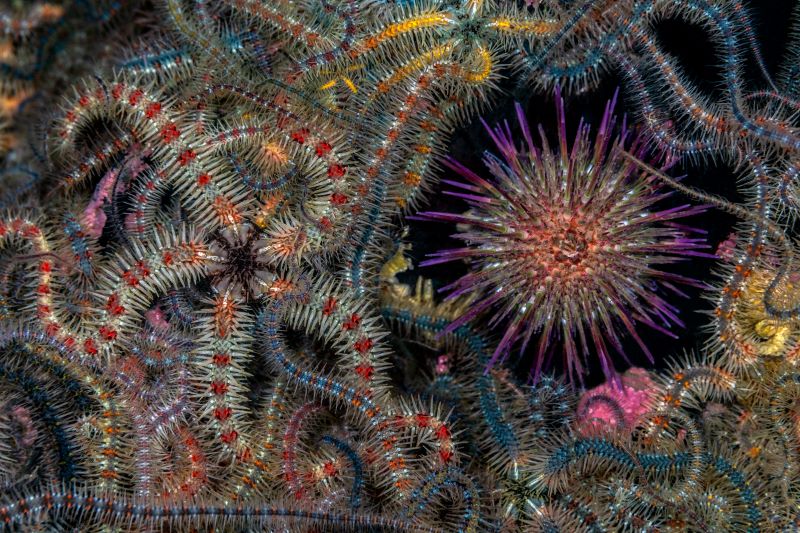
Photo: Jenny Stock
In the same contest, Portuguese photographer, Nuno Sá, was named ‘Save Our Seas
Foundation’ Marine Conservation Photographer of the Year 2024, with his photo ‘Saving
Goliath’, taken in Portugal. Sá’s photo shows beachgoers trying to save a stranded sperm
whale. The picture gives us hope that people do care and want to help the oceans, but also
warns us that bigger changes are needed. “The whale had been struck by a ship and its fate
was sealed,” explains Sá. “An estimated 20,000 whales are killed every year, and many more
injured, after being struck by ships-and few people even realise that it happens.”
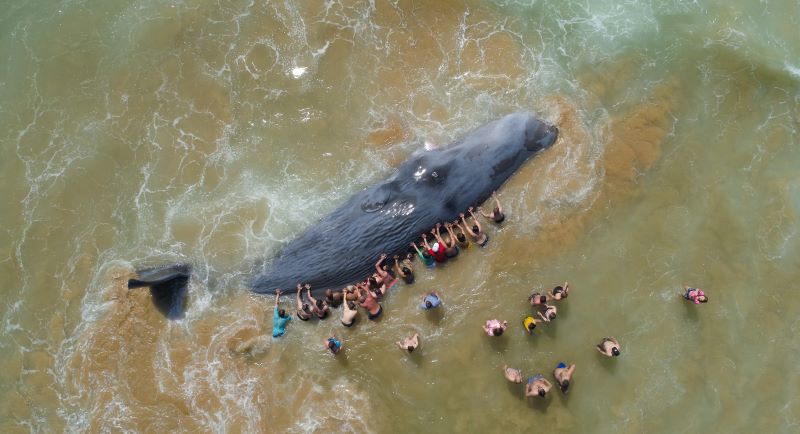
Photo: Nuno Sá
More winning images can be found at www.underwaterphotographeroftheyear.com.
About Underwater Photographer of the Year
Underwater Photographer of the Year is an annual competition, based in the UK, that celebrates photography beneath the surface of the ocean, lakes, rivers and even swimming pools, and attracts entries from all around the world. The contest has 13 categories, testing photographers with themes such as Macro, Wide Angle, Behaviour and Wreck photography, as well as four categories for photos taken specifically in British waters. The winners were announced in an award ceremony in Mayfair, London, hosted by The Crown Estate. This year’s UPY judges were experienced underwater photographers Peter Rowlands, Tobias Friedrich and Dr Alexander Mustard MBE.
Header image: Underwater Photographer of the Year 2024 winner Alex Dawson
News
World’s Best Underwater Photographers Unveil Breathtaking Images at World Shootout 2023
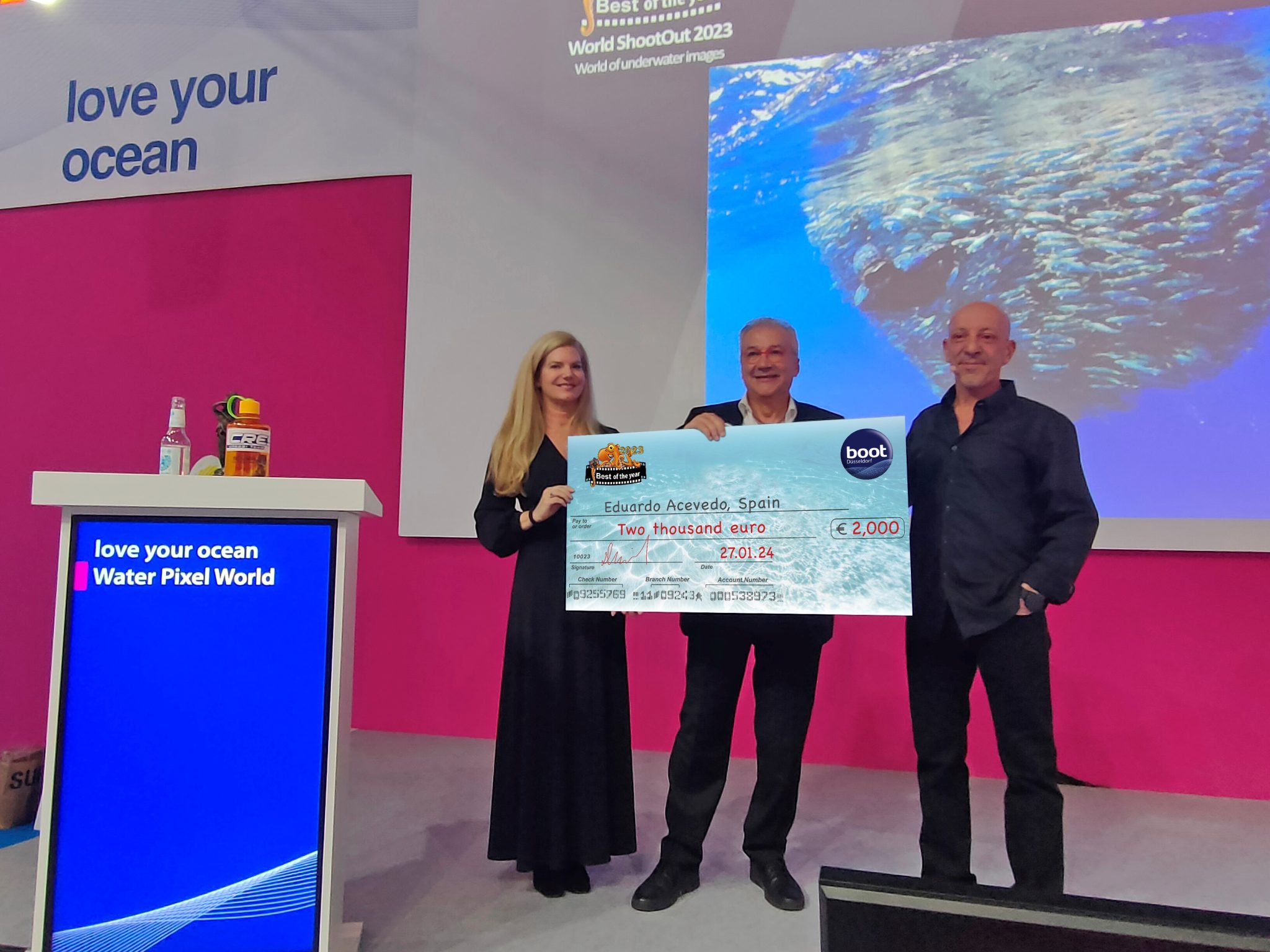
The winners of the prestigious World Shootout 2023 underwater photography competition were announced at this year’s BOOT Show, captivating audiences at the world’s largest diving and water sports exhibition in Dusseldorf, Germany. Hundreds of photographers from 54 countries competed across nine categories, pushing the boundaries of creativity and technical skill.
Grand Prize Winners
- Picture of the Year: Spanish photographer Eduardo Acevedo “secured” the top Honor with the prestigious prize the “boot Dusseldorf Director’s Prize, earning an Andromeda statuette and a €2,000 cash prize.
- Best 5 Images Portfolio: Luc Rooman from Belgium triumphed in this category, winning a dream 4-week diving trip for two to Papua New Guinea, valued at $18,900.
- Amateur Photographer: Alexandra Ceurvorst from the USA impressed the judges with her talent, taking home the 1,000 € cash prize award.
Celebrating Diversity and Innovation
This year’s competition saw 11,680 entries from 964 photographers, showcasing a remarkable spectrum of skills and perspectives. From the intricate wonders of Macro photography to the beauty of “Black Water”, the “Underwater Fashion” category added a touch of artistry and innovation, while the ever-important ” Environmental & Conservation” category served as a powerful reminder of the need to protect these fragile ecosystems.
Looking Ahead: AI and Ocean Conservation
World Shootout founder and producer David Pilosof unveiled an exciting addition for the 2024 competition: this year the Environmental category will be focusing on the impact of plastic on our oceans and future.
This category will embrace the potential of AI or other editing software as a tool to amplify the conservation message.
Entrants will submit campaigns of three original underwater photographs dealing with plastic pollution, along with their final AI assistance processing. This innovative approach encourages artistic expression while raising awareness about a critical environmental issue.
Explore the Stunning Collection
Discover the complete album of competition entries by clicking here.
For Low-resolution photos of finalist entries in eight categories, click here.
-

 News3 months ago
News3 months agoHone your underwater photography skills with Alphamarine Photography at Red Sea Diving Safari in March
-

 News2 months ago
News2 months agoCapturing Critters in Lembeh Underwater Photography Workshop 2024: Event Roundup
-

 Marine Life & Conservation Blogs2 months ago
Marine Life & Conservation Blogs2 months agoCreature Feature: Swell Sharks
-

 Blogs2 months ago
Blogs2 months agoMurex Resorts: Passport to Paradise!
-

 Blogs2 months ago
Blogs2 months agoDiver Discovering Whale Skeletons Beneath Ice Judged World’s Best Underwater Photograph
-

 Gear News3 months ago
Gear News3 months agoBare X-Mission Drysuit: Ideal for Both Technical and Recreational Divers
-

 Gear Reviews2 months ago
Gear Reviews2 months agoGear Review: Oceanic+ Dive Housing for iPhone
-

 Marine Life & Conservation2 months ago
Marine Life & Conservation2 months agoSave the Manatee Club launches brand new webcams at Silver Springs State Park, Florida


